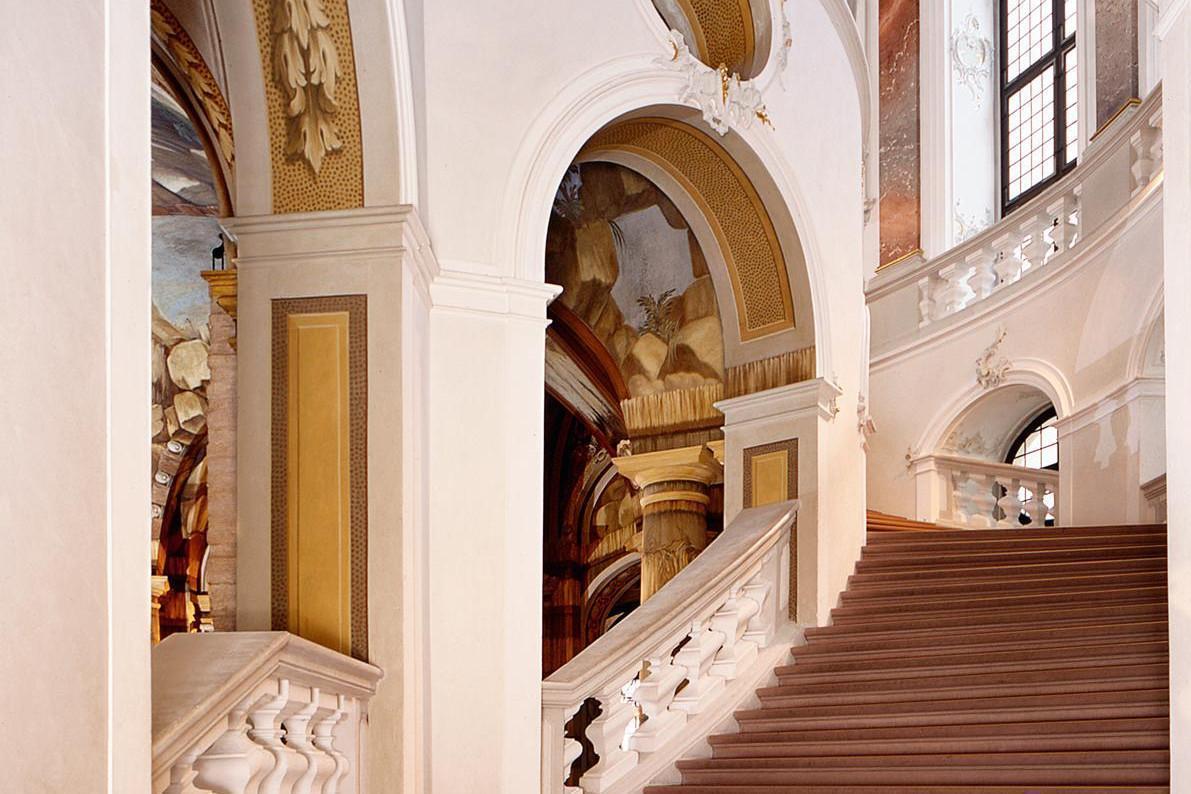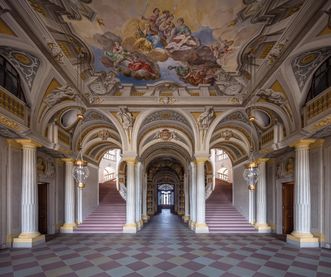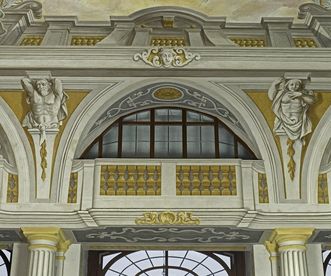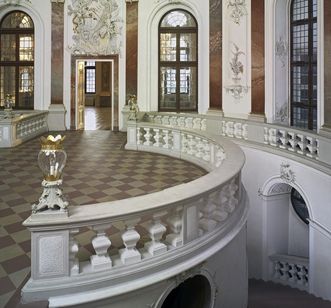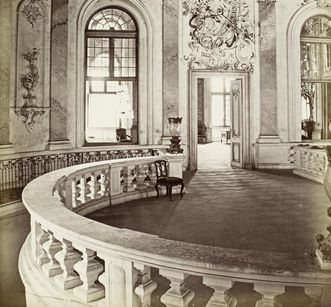Unique architecture
On an oval floor plan, the two stairways swing up, allowing an open view down to the grotto. With increasing height, the staircase grows brighter from the atria on the sides and from above. The destination of the climb is impressive: A large, painted cupola crowns the oval space, which also forms a bridge-like connection between the two ceremonial halls, the Royal Hall and the Marble Hall. The grotto, stairs, and Domed Hall form a cohesive whole, a truly unique combination.



